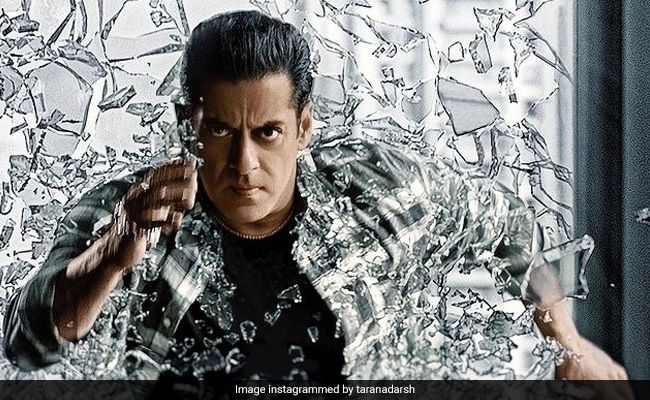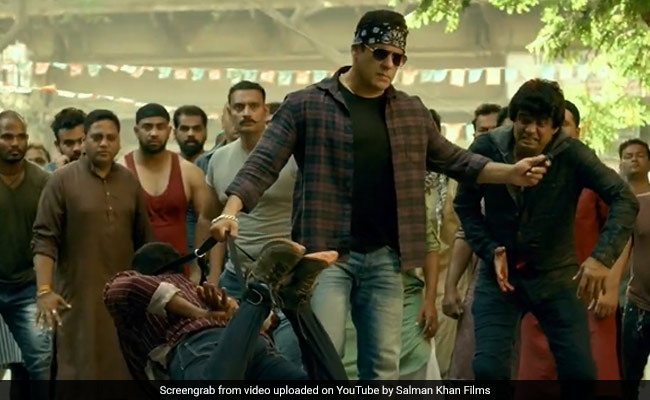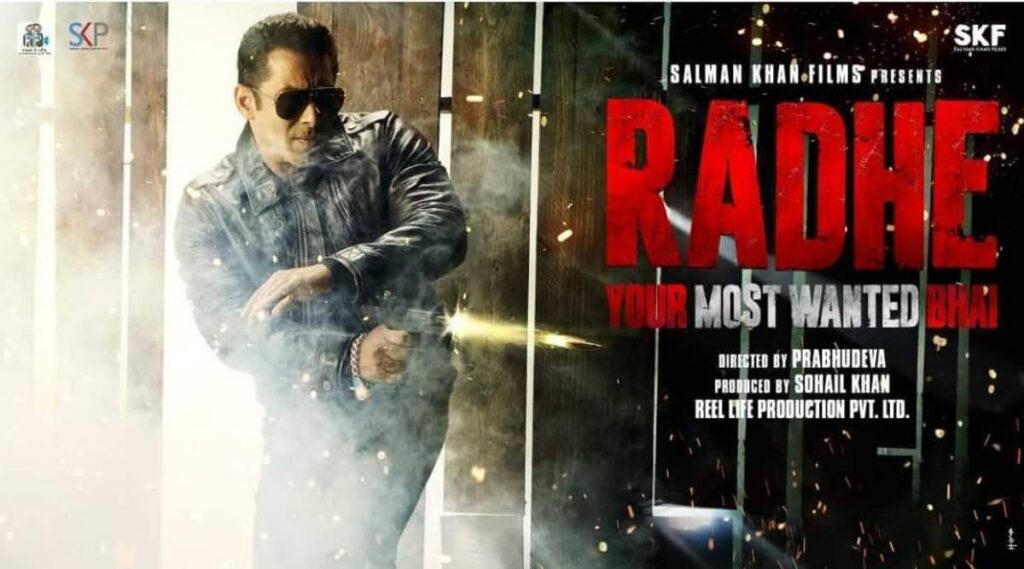Salman Khan’s recent action-thriller Radhe: Your Most Wanted Bhai was the superstar’s Eid bonanza for 2021 which made several headlines. Directed by Prabhu Deva, the visual extravaganza stars Disha Patani, Randeep Hooda, and Jackie Shroff along with Khan. In the film, the superstar’s macho cop avatar takes on the drug mafia. Naturally, the movie was loaded with VFX imagery and extraordinary action ranging from fisty cuffs to explosions to fight sequences and more. We caught up with redchillies.vfx team to know about the behind-the-scenes process of delivering the VFX for the mass entertainer.
With a total of 1,856 VFX shots, 288 artists worked on an entirely remote pipeline, barring the initial two months in the office. The initial brief was simple – the movie is action-packed and there will be a lot of action sequences.
redchillies.vfx is well-known for making innovative use of advanced VFX techniques to deploy crafty and mind-blowing images. There has always been several technological advancements from time to time that empower VFX as a tool. The unprecedented feat of shrinking superstar Shah Rukh Khan into a dwarf in the movie Zero is still ripe in the our memories.
Elaborating their experience about working on the extraordinary visuals and action sequences in Radhe, they shared, “Working on big banner movies like Radhe has always been a great experience. Especially since it’s our first major film with Salman Khan as a VFX studio. It being a Salman Khan’s action packed-fast-paced blockbuster; we were thrilled to be the lead VFX studio. We have worked on most of it, from a VFX point of view. From advanced FX simulation, to creating photorealistic CG assets, body double, environment development, seamless de-aging, the flawless live shots with digital comp and so much more. It stands close to 3,000 VFX tasks. Working on them, given the current situation, has proven that we can deliver even within remote-working scenarios.”

The famous ‘Bhai-ki-entry-shot’ is getting praised across the board. The team informed that this was a challenging shot. They shared, “Prabhu Deva wanted Salman’s entry to be more dynamic and dashing as compared to his previous films. That’s where the idea got developed of showing Radhe entering in a penthouse through the window glass at super highspeed with all the possible camera angles the DOP wanted to cover.”
On the set, they shot Khan doing all his actions against a green screen and the only thing made on the set was the room structure. All of this added to challenges on the VFX front. Expounding on the action sequences they had to create, they detailed, “Not only we had to simulate the glass breaking like a blast, the way it happens in a usual action film, but also get the lead hero of the film, smashing and running through the shattered glass pieces and even spitting out a piece of glass through his mouth to hurt a person in the room.”

It required a substantial amount of R&D on this one in terms of getting the timing right and making it work in continuity, keeping in mind the aesthetics of the storyline and Radhe’s character. Speaking about the look and feel of the movie, they shared, “Once we got our simulation right, it was then a matter of visually perfecting the glass particles and pieces to look photorealistic. Here is where we had our look and development plus lighting team to do a terrific job on this one. Finally, overall with VFX and sound effect, when SK saw the final output, he was blown away for sure! Just like the glass was.”
On being asked about the most difficult scene that tested their VFX prowess, the team informed, “Apart from the glass break, the entire opening scene, where SK is fighting with other goons inside the penthouse, was another demanding scene.”
Computer generated elements have become photorealistic to a point of being indistinguishable from the real objects. The team added, “The entire city backdrop was created with a mix of CG assets and high rise city shots which we had specially shot for VFX reference. There were times where CG double(s) of the actors in the scene were digitally created and used for dynamic action moves. There were other action essentials like blood spurts, CG sword and ramped effects, that together made the scene into the high-octane sequence it came out to be.”
They informed that to enhance the imagery and action, they used action elements like blood spurt, breaking of props, muzzle flashs, fast ramps and camera shakes; to really sell the effects and make the viewer feel as if they were in the same room as the fight was.
Director Prabhu Deva is known for the south-style action-thrillers and his ideas have always appealed to the masses. When asked about the experience of working with him, they shared, “Our main aim was to make it as immersive and real as possible. Working with Prabhu Deva is always a learning experience and a challenging one as well. He comes up with out-of-the-box ideas, which require advanced visual support to execute, so that it’s not only entertaining, but also appealing at the same time to the audience.”
Reflecting on the technologies that excite them, they shared, “The acceptance of visual effects as an integral part of moviemaking in India has opened up new technologies to acceptance. One of these technology is Virtual Production which has created quite a buzz in recent times. Virtual Production is the culmination of the physical and digital world. The perfect marriage between live action footage and computer graphics in real time.”
Virtual production indeed is the proverbial 800 pound gorilla VFX Industry is abuzz about. A rear projection technique taken to its photorealistic extreme with game engines delivering the final pixel is what makes this technology so exciting.
Adding to what makes it so useful, they informed, “Given the current scenario where shooting on outdoor locations is restricted, virtual production allows natural settings to be replicated in the studio enabling technology to generate 360 degree environment that fully replicates the natural locations. This not only saves logistical time invested in real location based operations, but also gives more control over natural settings in virtual scenarios.”
Unreal Engine fellowships are bursting at the seams and studios are on a hiring spree for Unreal Engine specialists. With the wonders of this technique being demonstrated time and again across various projects ranging from Meerkat to Mandalorian, VFX supervisors are learning how to leverage it for their future projects.
redchillies team shared, “Another exciting tech is the entry of Unreal gaming engine in the cinematic world. Realtime Photorealistic rendering and compositing are some of the benefits that puts Unreal engine way ahead in the VFX game. Creating Live 3D environments and working with CGI in real time saves on a massive amount of pre-rendering process, greatly speeding up and finessing shots involving VFX. You might have seen gaming cinematics closing the gap between what’s real and what’s virtual. That’s the next big thing.”
The pandemic had the entire VFX industry scrambling to find ways to continue their operations, jolting them out of their traditional workspace routines. While the world of VFX managed to get back on its feet eventually, there were several lessons that they learned on the way to recovery.
Speaking about the current VFX scenario, they shared, “While the answer to this question is not as simple as it seems, it surely is a step in the right direction. Before the pandemic, VFX was mostly a location centric process, centralised around a studio with all the tech you need. And don’t get us wrong, that mode of operating is still the most efficient. But with the pandemic, VFX as an industry has survived, learned and adapted. We as a studio have managed to deliver large scale projects from a work-from-home workflow. This has trained the studios in the industry to incorporate work-from-home as another skill up the sleeves.”
As far as work is concerned, they note, the shooting restrictions and theatre constraints have routed filmmakers to resort on VFX as an important tool in filmmaking.
“More OTT viewership has also led to the rise in films and shows using VFX to tell a story, given the shooting restrictions and crew limitations. All in all, the VFX industry has found it’s way to operate and deliver in challenging situations. That being said, we are more versatile than ever,” they concluded with a smile.

